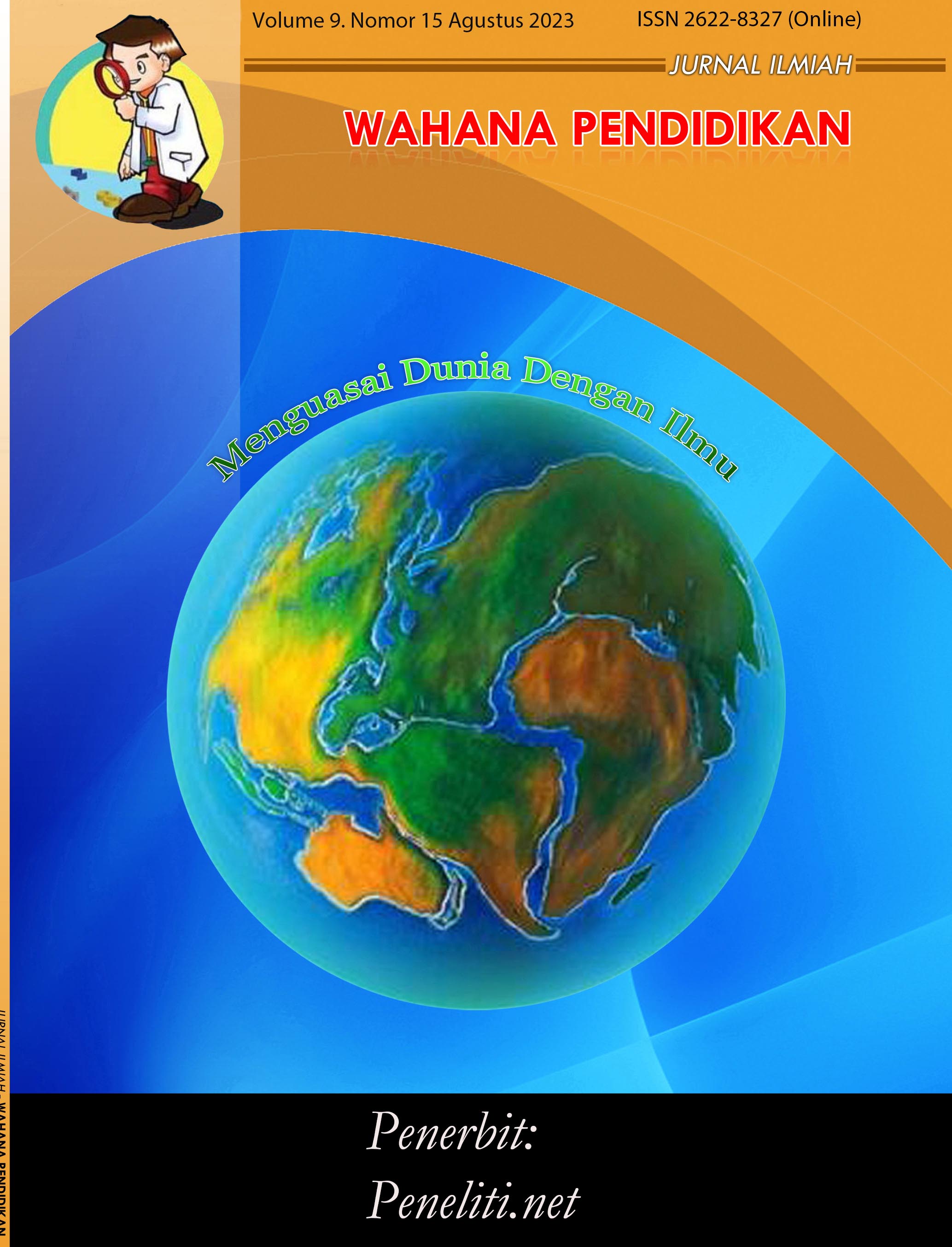The Influence of the Development of Micro, Small and Medium Enterprises on National Income in Indonesia in 2010-2013
Abstract
The significant impact on the national income highlights the value of expansion and economic development in Indonesia. Micro, small, and medium enterprises (UMKM) play a crucial role in the overall tax revenue of the country. By utilizing secondary data collected by the Central Statistics Agency (BPS), this research attempts to measure the influence of UMKM growth on Indonesia's GDP between 2010 and 2013. Descriptive qualitative analysis is the method employed in compiling this research data. The findings of this study demonstrate that the sector that can provide a fairly relevant contribution to the country's GDP through labor and investment is the UMKM sector. Micro, small, and medium enterprises (UMKM) have an important role in driving the development of new markets and creating new job opportunities. Their contribution can enhance Indonesia's GDP and overall balance of payments, thereby increasing their significance in fostering opportunities and economic growth.
References
Castillo, Adalberto Escobar et al. 2019. “Factorial Analysis in the Intellectual Capital’s Dimensions on Micro, Small and Medium-Sized Export Enterprises.” Procedia Computer Science 160: 567–72. https://doi.org/10.1016/j.procs.2019.11.046.
Gandhi, Andri, Rahmat Nurcahyo, and Djoko Sihono Gabriel. 2021. “Identification of Challenges and Benefits of Product Certification on Micro, Small, and Medium Enterprises (MSMEs) in Indonesia.” Proceedings of the International Conference on Industrial Engineering and Operations Management: 498–509.
Hamza, Lies Maria, and Devi Agustien. 2019. “Pengaruh Perkembangan Usaha Mikro, Kecil, Dan Menengah Terhadap Pendapatan Nasional Pada Sektor UMKM Di Indonesia.” Jurnal Ekonomi Pembangunan 8(2): 127–35.
Hasan, Muhammad et al. 2016. Transformasi Digital Di Bidang Pendidikan.
Juanda, Reza, Mity Risky, and Rico Nur Ilham. 2021. “The Influence of Growth of Micro Small and Medium Enterprises ( Umkm ) and Unemployment on Growth.” : 188–202.
Khan, Muhammad Salar. 2022. “Absorptive Capacities Approaches for Investigating National Innovation Systems in Low and Middle Income Countries.” International Journal of Innovation Studies 6(3): 183–95. https://doi.org/10.1016/j.ijis.2022.07.004.
Kurniawan, Surangga Adi. 2020. “Pendapatan Nasioanal Terhadap Hubungan Antara Usaha Mikro, Kecil, Dan Menengah (UMKM) Jawa Timur.” … Usaha Mikro, Kecil dan Menengah (UMKM) …: 1–15. http://eprints.umsida.ac.id/6890/.
Lin, Justin Yifu, Zirong Yang, Yingting Li, and Yilin Zhang. 2022. “Development Strategy and the MSMEs Finance Gap.” Journal of Government and Economics 5(March): 100034. https://doi.org/10.1016/j.jge.2022.100034.
Luo, Chuliang, Shi Li, and Terry Sicular. 2020. “The Long-Term Evolution of National Income Inequality and Rural Poverty in China.” China Economic Review 62(September 2019): 101465. https://doi.org/10.1016/j.chieco.2020.101465.
Maksum, Irfan Ridwan, Amy Yayuk Sri Rahayu, and Dhian Kusumawardhani. 2020. “A Social Enterprise Approach to Empowering Micro, Small and Medium Enterprises (SMEs) in Indonesia.” Journal of Open Innovation: Technology, Market, and Complexity 6(3): 50. https://doi.org/10.3390/joitmc6030050.
Rahmawati, Surya, and Suriani Suriani. 2022. “The Impact of Macroeconomic Indicators on Indonesia’s Foreign Exchange Reserve Position.” Jurnal Ekonomi Pembangunan: Kajian Masalah Ekonomi dan Pembangunan 23(1): 19–30.
Santosa, Teguh, and Yeniasari Rizkia Budi. 2017. “Analisa Perkembangan Umkm Di Indonesia Pada Tahun 2017 - 2019.” Jurnal Ekonomi Pembangunan 1(2): 57–64.
Subandi. 2011. “Qualitative Description as One Method in Performing Arts Study.” Harmonia (19): 173–79.
Tarmidi, Lepi T. 2003. “Krisis Moneter Indonesia: Sebab, Dampak, Peran IMF Dan Saran. Buletin Ekonomi Moneter Dan Perbankan.” Buletin Ekonomi Moneter dan Perbankan 1(4): 1–25. https://bmeb.researchcommons.org/bmeb/vol1/iss4/6/.




